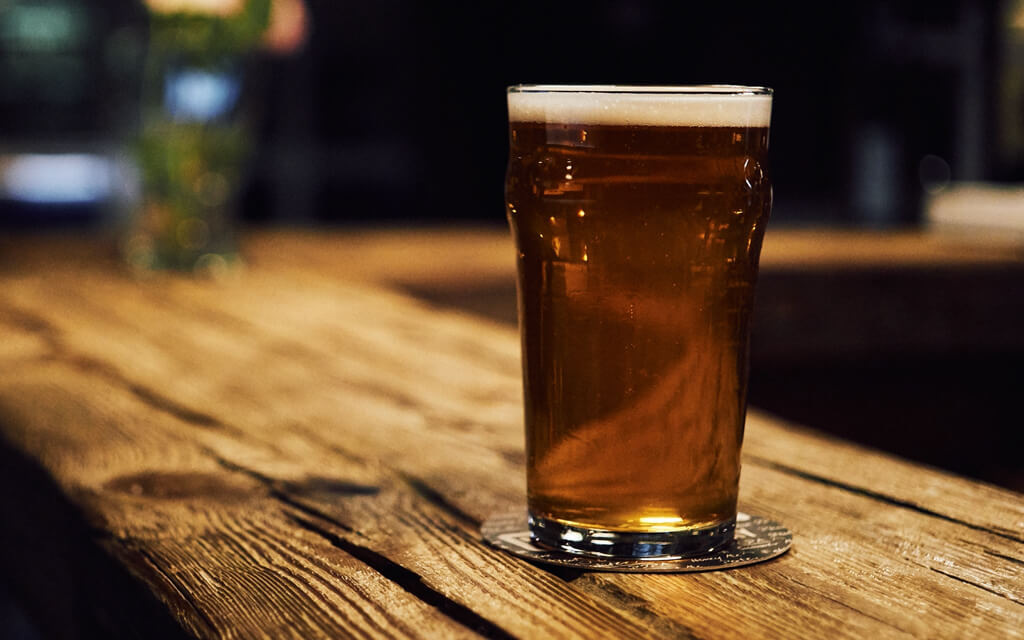CASK ALE
The great british pub brew
Add {beersToAddNum} more beer and get this box delivered for free Add {beersToAddNum} more beers and get this box delivered for free
Add 1 more SUB Keg and get your box delivered for free Add {torpsToAddNum} more SUB Kegs and get this box delivered for free
Add one more keg for free shipping.
Cask beer, real ale or traditional English ale is commonly perceived as warm flat beer only drunk by the older generation. When in fact it’s essentially an art form that requires skill and knowledge to master, and when served right, it’s perfection in a pint glass that every beer lover should be drinking.
To break it down, an ‘ale’ is technically any style of beer that is fermented using a top-fermenting yeast (Saccharomyces Cerevisiae) that converts fermentable sugars into alcohol and CO2 when at a temperature between 15 and 24 °C (60 and 75 °F). Depending on the preference of the brewer, they may opt to rack some of this beer into casks which is a broad term for a barrel that comes in different sizes as well as made from different materials. In the beer industry, the most common type of cask used is a firkin – a 9-gallon barrel, usually metal, which can hold around 72 pints of beer. When the unpasteurised and unfiltered beer is packaged into cask, the brewer will add some yeast for a secondary stage of fermentation, and they may also choose to dry-hop the beer with a fresh dose of hops straight into the cask.
This term “real ale” was coined by The Campaign for Real Ale (CAMRA) to describe draught cask beer. Founded in Britain in 1971, their primary aim is to promote and advocate real ale, distinguishing it from bland, high carbonated and mass-produced beer. The campaign has been extremely successful, with now over 200,00 members across the UK. Cask is now almost universally available and sought after in British pubs. Many smaller breweries were launched and revived to meet this demand, competing successfully with large franchises and chains that advocate the use of large kegs for serving this beer style.
How do you serve real ale?
Now comes the hardest part, serving up the finest real ale that’s full of body, flavour, perfectly and naturally carbonated, has good clarity, is at the right temperature and without any off-flavours. And all of these come down to whether your local boozer has treated the beer with the time, care and attention it needs. Ideally the cask should be vented on the day that it arrives at the pub. The best time is a few hours after delivery to allow time for the beer to settle and cool. Venting is the controlled release of C02 and yeast. The beer will need to be tapped to kickstart the secondary phase of fermentation, and be left on a rack for a few days before it's ready to serve, although the beer will tested first to ensure that the clarity of the beer is clear, that carbonation levels are correct and that it doesn’t taste or smell like it’s still a bit young, or that any off-flavours have developed.
When the beer is ready to serve, the pub will have just a few days to serve the beer at its peak, after this the exposure to oxygen will start to spoil the bar and any naturally produced carbonation will fade away. The beer is usually served into a nonic pint glass at room temperature (around 12°C degrees), either through a sparkler or without.
A sparkler fits onto the spout of the hand pump and will allow the beer to pass through tiny holes giving it a more stable foamy head. Although each beer drinker has their own preference, it’s traditionally to find pubs in the North of the UK to use a sparkler, whilst those in the south tend to go without.

Although almost no beer styles are excluded by being served from this method of dispense, some are more common.
Mild ale
Mild ale is enjoying something of a renaissance in the emerging real ale market. It is however, one of the most traditional and popular styles but went out of fashion in 1960s. It has a malty taste with a low ABV, usually between 3%-3.6%. Interestingly, mild remained popular in Wales, remaining popular amongst coal miners. Some brewers have continued to brew mild, but for marketing purposes have advertised it under a different name, mainly dark.
Bitter
Bitter beer grew out of what we know as pale ale. The name bitter beer is a little confusing as there are beers far more bitter than this style not called “bitter” beers. At the time of their rise to popularity in 19th century however they were considered to be quite bitter. All the beers that had preceded them were less bitter and mild, hence bitter beer was used to differentiate this new more hoppy style. We have many styles within the bitter parent style, most categorised by their strength. There is ordinary bitter, best or special, and extra strong bitter, commonly referred to as ESB, although this is a brand name owned by Fullers Brewery from Chiswick.
Golden ales
Under bitter ales, we also include this newer style of pale, well-hopped beer. Golden ales were developed in the 1980s, characterised by a pale amber, gold colour and a low ABV. The taste profile is clean, hoppy but also with the noticeable biscuit maltiness.